November 1, 2009
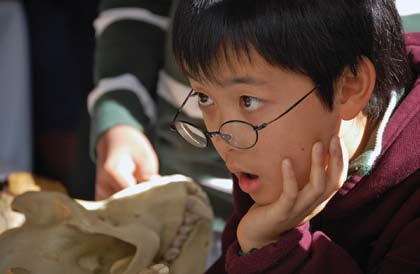
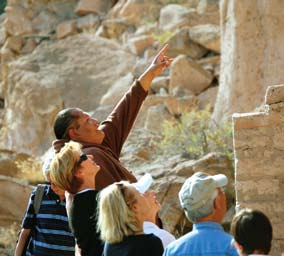
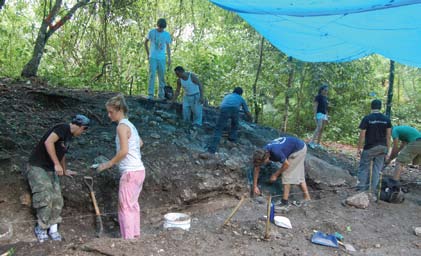
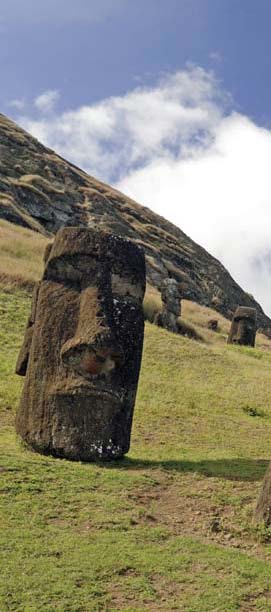
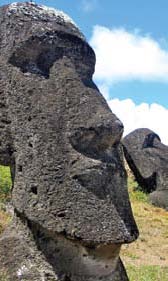
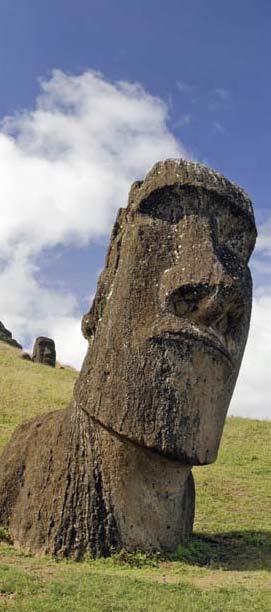
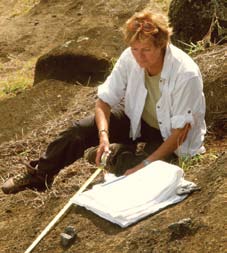
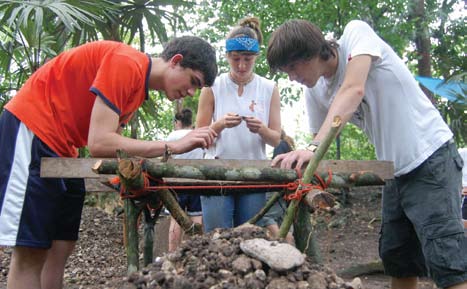
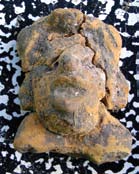
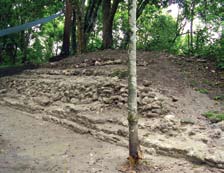
As an AIA member and officer, I am often asked this very question. Usually I respond by listing our numerous events, programs, and publications, including Archaeology magazine, and then talk about our members and the critical work they do through our 107 Local Societies nationwide. This general overview, however, does not adequately convey the significance and impact of our far-reaching activities. I am therefore delighted to introduce a new section of Archaeology designed to highlight our most exciting projects. It will appear biannually in the magazine.
Beginning with this issue, Dispatches from the AIA will invite readers to explore specific ways in which we carry out the Institute’s core mission of understanding and preserving the past. It will also detail the exciting work of our members, who are continually finding new ways to reveal, conserve, and publicize the world’s cultural heritage. For example, on the following pages you will read about two important yet diverse projects: our efforts to preserve Easter Island’s iconic moai statues, and an innovative archaeology program for high-school students in Belize. We hope that as you get better acquainted with our activities, you will also become more involved with the AIA’s programs.
Your support of the Institute is now more important than ever. On behalf of the AIA, I offer heartfelt thanks for your generosity over the years and urge your continued commitment to protecting our rich cultural heritage and shared past.
Please enjoy this new section. And the next time someone asks you what the AIA does, you’ll have some fascinating stories to tell.
C. Brian Rose
President, Archaeological Institute of America
A critical site preservation initiative on Easter Island
Few archaeological monuments are as striking as the colossal statues of Easter Island. But the moai, as the giant heads are known, are endangered, and important basic research on how to save them must be conducted immediately. For this reason, the AIA has given a $94,000 grant to the Easter Island Statue Project (EISP) to develop stone preservation techniques to arrest the rapid deterioration of these statues resulting from the fragile nature of their material, weathering, and uncontrolled tourism.
“Our initial, informal analysis of data on the stone surface condition illustrates a truly alarming deterioration in virtually every part of the island,” says Jo Anne Van Tilburg, director of EISP. “Every statue suffers from near-complete erosion of stone surface, and decomposition is near universal.”
Van Tilburg is based at the Cotsen Institute of Archaeology (University of California at Los Angeles), and Archaeology readers will be familiar with her and EISP’s laser scanning of moai, which was featured in “The Past in High-Def” (May/June 2009). The scanning is part of EISP’s effort to systematically map and describe the nearly 900 moai on Easter Island and in museums worldwide. In addition to results from the latest studies, the EISP database includes old excavation reports and photographs, never before published, that date from the 1880s to 1960. This vast database will be available both to scholars and the public.
The Danger
EISP has recently completed digital mapping of quarries inside Rano Raraku, a volcanic crater on the island’s eastern plain, the source of stone from which 95 percent of the moai were carved. But while easy to work, the type of volcanic stone (or “tuff”) found at Rano Raraku is extremely fragile because of its composition and porous texture, as well as weakness in its surface layers. The moai face a number of threats:
* Exposure to wind, rain, and solar heat, combined with intense wetting and drying cycles
* Lichens, algae, mosses, and bird guano deposits that cause deterioration
* Negative effects of earlier conservation efforts that used cement mortar
* Misdirected or unaccompanied tourists walking or climbing on the statues
* Uncontrolled livestock abrading statue surfaces
What will happen if nothing is done? Images of a single statue, taken from 1914 to 2004, show almost total loss of design detail. And some of the statues, says Van Tilburg, have already passed the point of no return.
The Rescue Plan
The AIA-funded EISP project will take place in three phases over five seasons, with an initial focus on the conservation of two statues in the Rano Raraku interior quarry. A first step will be to assess the moai and their environment in detail. This will include excavation, stabilization, and documentation of the moai. The conservation state of exposed and buried portions of the two statues will be evaluated. Environmental data will be collected, including soil moisture and temperature, moai surface tem- perature, sunlight exposure, and the wind, air temperature, and humidity at the site. At the same time, currently available data about field-tested stone consolidation and protection treatments will be reviewed.
In the second step, the moai will be cleaned of any plant growths in advance of treatment, which begins with a water-based anti-swelling agent, followed by a drying phase that will last several months. Once that is completed, treatment to consolidate the stone will take place, followed by application of a water repellent as a final protection. After at least one year, the effectiveness of the process will be assessed.
Assuming the treatment is successful, the third step will extend the effort to other statues in Rano Raraku. Meanwhile, a conservation plan will be developed and incorporated into an overall site-management plan. A key focus of the conservation initiative will be direct community action. In the past, the Easter Island community has not been involved in planning regarding the monuments, which, after all, are their unique cultural heritage.
The Way Ahead
Something must be done to save the moai, and the AIA-EISP partnership is a beginning. “The grant will jump-start our efforts to preserve this remarkable cultural resource for future generations on Easter Island and the world at large,” says Van Tilburg. “The fragility of the stone, coupled with the fact that Rano Raraku is a major tourist destination, creates an urgent conservation imperative. We thank the AIA for its assistance in this monumental task.” To learn more about the AIA’s Site Preservation Program, visit www.archaeological.org/preservation. See www.eisp.org for further information on the Easter Island Statue Project.
High-school students participate in an innovative field program in Belize
Cahal Pech sits on a steep hill overlooking the Mopan River in the modern town of San Ignacio, Belize. In its heyday, during the Classic period (a.d. 250–900), this ancient Maya city was a significant political and ceremonial center—its power evidenced in its temple pyramids, large public plazas, multiple ballcourts, and stone monuments. Today, the site is not only a popular tourist destination, but also a place where the AIA is supporting an exceptional archaeological program for American high-school students.
Since 1988, members of the Belize Valley Archaeological Reconnaissance Project (BVAR), under the supervision of archaeologist Jaime J. Awe, Director of the Institute of Archaeology (IOA) in Belize, have been researching the site. Awe’s work has revealed Cahal Pech’s long history, including some of the earliest evidence for Maya occupation in the region.
In 2006, Mat Saunders, a highschool teacher from Palm Coast, Florida, and a BVAR alumnus, brought five of his students to Cahal Pech to participate in an experimental field program. Its main goals were to teach the students about archaeology and the ancient inhabitants of Cahal Pech through field research and excavations, and to provide them with an opportunity to live and work in a foreign country. The experiment was so successful that, with Awe’s support, Saunders established the BVAR–American Foreign Academic Research (AFAR) program to bring students back annually.
Over the years, more than 40 high-school students have excavated at Cahal Pech, helped map a second Maya site, and archived artifacts for the IOA using digital field microscopes and virtual 3-D photography software. Several of the participants, who describe the experience as “awesome” and “life-changing,” have returned for a second or third season. Some have gone on to study archaeology in college and beyond.
The AFAR operations illustrate sound archaeological practice and emphasize the importance of education through outreach to the next generation, which is central to the AIA’s mission. Specifically, they combine learning with practical action, teaching students how to study an ancient culture in a direct way and showing how sites can be responsibly preserved for the future.
In 2009, the AIA decided to support this innovative program. During the latest field season, 14 students spent two weeks excavating the foundation of a building adjacent to the site’s main ballcourt. Its superstructure had been lost over time through erosion and neglect, but excavations revealed a portion of the monument’s penultimate construction phase. Awe and the IOA, with the AIA’s backing, decided to preserve the unearthed structure through consolidation. Unlike previous seasons, when the trenches were backfilled to protect them, the recent consolidation effort will stabilize the building and allow it to remain accessible to visitors.
In the coming years, the AIA will work with Awe and Saunders to expand the project nationally by asking AIA Local Societies to identify and financially support deserving students from their communities to participate in the program. If you are interested in sponsoring a student for the 2010 season, or know a young person who would benefit from the program, please contact us by e-mail at development@aia.bu.edu.
International Workshops November 9–10, 2009
Heritage in Conflict and Consensus: New Approaches to the Social, Political, and Religious Impact of Public Heritage in the 21st Century
Organized by UMass Amherst Center for Heritage & Society, and supported by the AIA
January 7, 2010
Lessons from the Field: Pursuing Best Practices in Site Preservation
Organized by the AIA, Anaheim Marriott Hotel, Anaheim, CA
111th AIA-APA Joint Annual Meeting
January 6–9, 2010, Anaheim Marriott Hotel, Anaheim, CA
10th Annual AIA Archaeology Fair
January 9–10, 2010, Ocean Institute, Dana Point, CA
Ancient-Themed Galas
April 28, 2010: AIA East Coast Gala, Guastavino’s, New York City
October 2010 (date TBD): AIA West Coast Gala, San Francisco
AIA Local Society Events
To find out about hundreds of events organized by AIA Local Societies, including lectures, fairs, and field trips, and to learn more about joining a society, visit www.archaeological.org/societies.